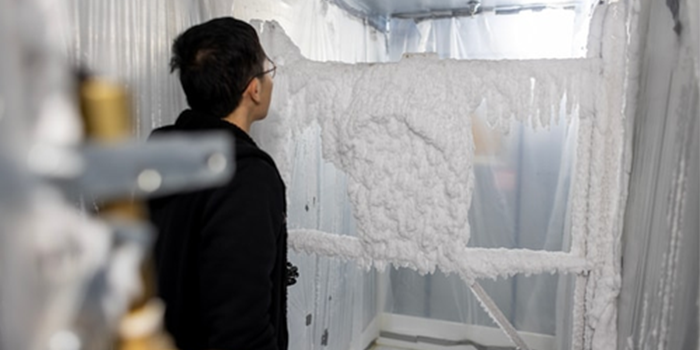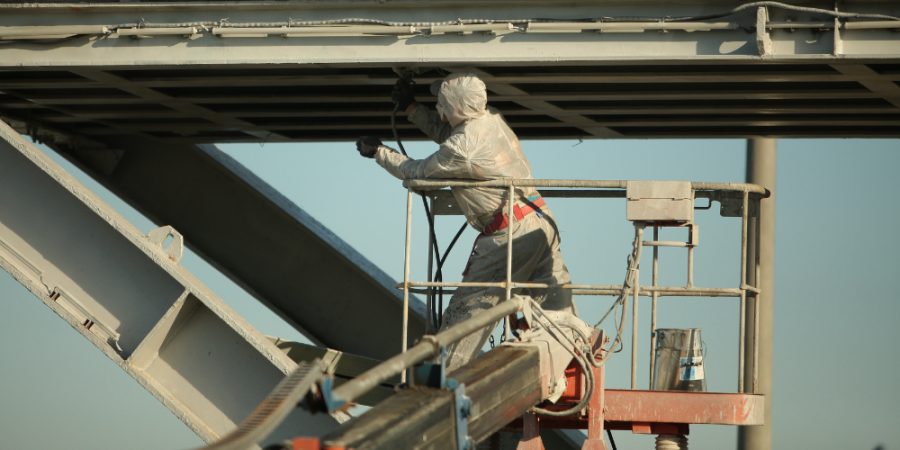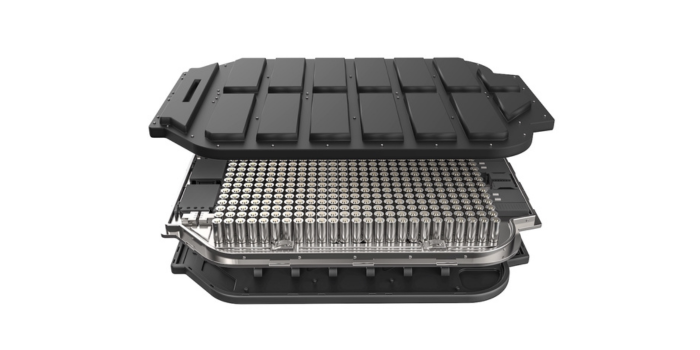Scientists investigate Ice Resistant Coatings

SPRAY FOAM NEWS – February 8, 2024 – A team of researchers at the University of Michigan recently began researching ways to keep ice off solar panels, airplane wings and more, utilizing biological molecules that other living organisms use to survive in freezing temperatures.
According to the university’s release, the project’s aim is to develop coatings with substances that can alter the freezing temperature of water, change the structure of formed ice, manage ice crystal growth on surfaces and influence how strongly ice adheres to surfaces.
About the Research
The team explained that the traditional materials used to face these issues have come with significant downsides. As an example, road salts can reportedly prevent pavements and streets from freezing but also corrode concrete and enter natural freshwaters through runoff, negatively impacting of aquatic life.
Additionally, spraying planes with de-icing fluids can help winter flights stay safe, but the chemicals in those fluids are toxic and can reportedly pollute waterways.
Researchers said that some ideas for the project have no current analogue, using the example of a lotion that protects from frostbite without heavy winter layers.
“For the past seven or eight years now, my group has been making surfaces that have very low adhesion to ice. Such ice-shedding coatings can be very useful for a number of applications such as wind turbines, power lines or airplane wings,” said Anish Tuteja, the project’s principal investigator and a professor of materials science and engineering at the University of Michigan.
“However, for many other applications, it would be beneficial to completely eliminate ice formation. Preventing ice formation for hours on end in freezing conditions has thus far been very challenging to achieve.”
To reach these goals, the research team is looking to plants, animals and microbes for inspiration. This is because organisms produce molecules that allow them to survive after freezing solid or completely stops their bodies from freezing.
As an example, wood frogs produce antifreeze lipids to prevent ice from damaging their cell membranes when they freeze over the winter.
They reportedly produce chemicals to protect their cells from ice-induced damage and lower the temperatures at which water freezes. The team stated that this gave the Tuteja labs a starting point when designing new de-icing products.
Additionally, other organisms reportedly produce “ice-nucleating” molecules, stimulating ice to form at warmer than usual temperatures. The bacterium Pseudomonas syringae reportedly creates ice-nucleating proteins to freeze plant leaves, helping break apart plant cells for the bacterium to get to the nutrients inside.
Through these new natural molecules in the lab, the researchers are aiming to find less toxic and biodegradable alternatives to today’s de-icing chemicals as well as molecular cocktails for brand new technologies.
“If you combine the molecules in the right ratios, the freezing point can decline more than what would be achievable by each molecule individually,” Tuteja said.
When starting from even a small subset of known molecules, the number of possible combinations and ratios can reportedly become harder to manage. The team stated that it must measure the effectiveness of over 5,000 ice-forming and antifreeze molecules within the first year of the project.
The release adds that this number could double or triple as the project progresses.
To study these molecular combos, the team said that it plans to build an automated platform for determining the freezing temperatures of as many as 1,500 samples a day. The team stated that it wants to narrow its search down to the 30 most promising candidate molecules for further study by the end of the first year.
In the second year of the project, the team plans to test each candidate molecule’s safety and toxicity in addition to its effectiveness at larger scales and in multiple forms, such as liquids, creams and coatings.
These experiments are expected to help the researchers find the best antifreeze and ice-forming mixtures but will also help reveal how different ice-forming and ice-inhibiting molecules do their jobs.
“Once we start to gather a lot of data on how these molecules work, we will work with machine-learning experts who will be able to determine which parts of the molecule might be modified to further improve their performance,” Tuteja said.
According to the release, the project will cost up to $11.5 million and is funded by the Defense Advanced Research Projects Agency.. Researchers from Raytheon Technologies, North Dakota State University and the University of Minnesota are also working on the project.
More Anti-Ice Coatings
In November 2021, Zentek Ltd., a Canadian development and commercialization company, announced the development of a new carbon-based, nanotechnology-enhanced icephobic coating.
Tests for adhesion strength required to dislodge ice from surfaces were conducted with a third-party lab, with the coating reportedly demonstrating an adhesion strength consistently around 20 kilopascals. ZEN reported that the typical ice adhesion strength of a bare aluminum alloy was about 500 kilopascals, while a classified icephobic surface must be less than 100 kilopascals, with the coating having a 96% improvement over aluminum and 80% improvement over the 100 kPa threshold.
ZEN planned to include the coating, which included graphene, in flight testing under real world ice-forming weather conditions this winter, as well as testing if the coating is an effective passive method to de-ice drone propellers to fly safely in all-weather operations.
According to the release, the company filed a provisional patent for the technology with the United States Patent and Trademark Office and began to explore partnership opportunities.
Also, in April 2022, researchers from the University of Illinois Chicago announced that they had developed environmentally safe, frost-resistant coatings for the aerospace industry.
The study, authored by Sushant Anand, UIC assistant professor of mechanical engineering, and Rukmava Chatterjee, a UIC PhD student, was published in Advanced Materials.
According to UIC, to accomplish their goal, the team developed a family of more than 80 anti-freezing coatings, which could be classified as polymeric solutions, emulsions, creams and gels. Without preconditioning or surface treatments, these formulations could have reportedly been applied to aluminum, steel, copper, glass, plastic or other industrial surfaces.
The researchers reportedly engineered the coatings by regulating how chemicals leach out of the material system and by creating a lubricating surface layer that is both slippery and non-freezing in nature. The gels were also transparent, allowing for applications on traffic signals, runway lights, automotive windshields or building windows.
Finally, in September of last year, a team of researchers from the University of Toledo reportedly developed a strip coating that caused accumulated snow to slide off solar panels without interfering with their efficiency.
According to a report from The Independent, the coating could reportedly create a way to passively remove snow from solar panels and allow them to keep generating electricity during harsh weather conditions.
The self-cleaning strip coatings could reportedly be applied to both new and existing solar installations relatively easily.
Tests in both the U.S. and Japan reportedly found that panels fitted with the strip had achieved over 5% improved power generation annually.
For use by SprayFoamMagazine.com & Spray Foam Magazine
Disqus website name not provided.









































